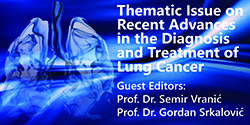Caries prevalence of children and adolescents in Bosnia and Herzegovina
DOI:
https://doi.org/10.5644/ama2006-124.79Keywords:
Oral health, Caries, Children, EpidemiologyAbstract
Objective. The aim of this study was to present epidemiological parameters of caries prevalence in children and adolescents in index age groups on a national and regional level in Bosnia and Herzegovina (BH). Materials and methods. The study was conducted during 2004 year for children aged 6 and 12, and during 2007 for adolescents aged 15. An oral health survey was performed on a total number of 1,240 children and adolescents in line with World Health Organization methodology and criteria. Results for caries prevalence and treatment needs were presented and discussed in this paper. Results.Mean dmft (decay, missing, filled teeth for primary dentition) for children aged six was 6.7 (SD±3.9) in that the decayed teeth constituted the major part of the index (88.8%), followed by extracted teeth (8.9%) and a small percentage of filled teeth (2.3%). In 12-year-olds DMFT (Decay, Missing, Filled Teeth for permanent dentition) was 4.2 (SD±2.9), Significant Caries index (SiC) was 7.7 (SD±2.9), the decayed teeth constituted the major part of the index (45.4%), followed by 42.1% of FT and 12.5% of extracted teeth. Among 15-year-olds the DMFT was 7.6 (SD±4.1), SiC was 9.2 (SD±1.2), and filled teeth constituted the major part of the index. Conclusion. The present study provides some evidence of relatively high caries prevalence and severity in comparison with Western European countries. It is necessary to devote more attention to the oral health of children and adolescents. Community based oral health promotion, preventive programs and preventive oriented public dental health care services should be made available and accessible to all children in Bosnia and Herzegovina.Downloads
Published
15.11.2013
Issue
Section
Epidemiology of dental caries
How to Cite
Caries prevalence of children and adolescents in Bosnia and Herzegovina. (2013). Acta Medica Academica, 42(2), 108. https://doi.org/10.5644/ama2006-124.79






